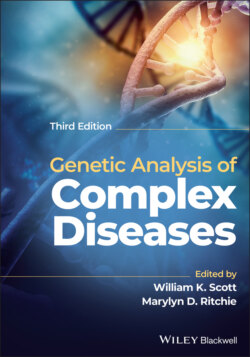Читать книгу Genetic Analysis of Complex Disease - Группа авторов - Страница 62
Population‐Based
ОглавлениеIdeally, one will select a study population that is an unambiguous subset of a larger underlying population. For example, this could include individuals selected from a newborn state screening registry (e.g. determining the frequency of congenital hypothyroidism in individuals from the California Newborn Screening Program (Waller et al. 2000)), children who attend a particular school system (e.g. screening for FRAXA and FRAXE in a special needs population (Meadows et al. 1996)), and individuals in a local cancer registry (e.g. examination of the involvement of genetics to fallopian tube cancer in patients identified from the Ontario Cancer Registry (Aziz et al. 2001)). This epidemiologic approach to selecting a study population is much less susceptible to ascertainment bias than a clinic‐based study population, and conclusions made from analysis are usually extendable to the larger underlying population from which the study population was drawn. The disadvantage with this approach is that it may be difficult to achieve the desired patient sample size for rare disorders, and even for common disorders, it can be quite laborious to identify eligible participants. For example, for a condition with a frequency of 1/1 000, one would need to screen 100 000 individuals to identify even 100 cases, a rather small sample size.
